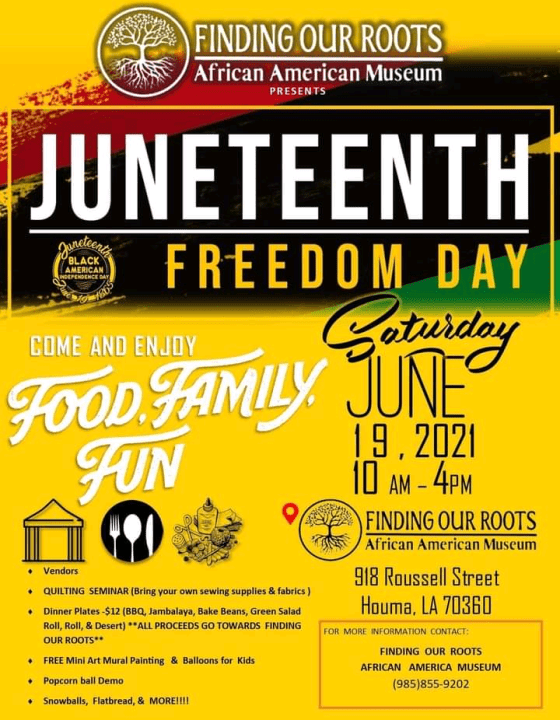HOUMA, La—Juneteenth is a great example of how an institution like slavery is not ended easily without: bloodshed, a national proclamation and enforcement of the new law by Union soldiers. Throughout American history, we would see similar acts of the government needing to protect new laws. In 1960, United States Marshalls would be needed to uphold integration and protect African American children attending school in New Orleans.
In 1808, the United States government, under the direction of Thomas Jefferson, made it illegal for the transportation of newly enslaved people from West Africa. However, the illegal underground slave trade, would exist almost up to the point of the civil war.
Margie Scoby is the founder and curator for the Finding Our Roots African American Museum in Houma, Louisiana. She says that in order to celebrate freedom, American citizens have to look back at all of the events that gave Americans independence.
On January 1st, 1863, the Emancipation Proclamation was signed, freeing over 20 thousand enslaved blacks. However, it was a long road to freedom.
The Wanderer was a ship that left New York in 1858 in the direction of West Africa. It was disguised as a cruise pleasure yacht; but it was acting as an illegal slave transport ship. Once it made it to the coast of Africa, it left with 500 people hidden below deck.
Margie Scoby is not only a museum founder, she is also the president of the Terrebonne Parish Genealogy Group. She decided one day, to explore her own family tree deeper than before. In doing so, she found out that two of her ancestors were brought over on the wanderer.
“I decided to complete my family tree. I stumbled across two people named Robert and Joe Williams, in my research. Joe Williams told a story in the records that he came in on the Wanderer. He was bringing in bananas and coconuts from his home in Africa and loading the Wanderer ship with cargo, with the intention of leaving when the job was done. A man named Charles Lamar told them to remain on the boat and that an inspector was coming. Once the inspector arrived, he would allow them to leave. That didn’t happen. They found themselves on high seas and ended up in America on Jekyll Island in Georgia. Robert and Joe happen to be my great great great great grandparents on both sides,” says Scoby.
Once The Wanderer made it to Georgia, Charles took about 40 slaves onward to the port of New Orleans, where they would find their way down to the wetlands on a plantation in Dulac, Louisiana.
“It was illegal. Charles Lamar was charged with that crime, but he was never prosecuted because his father-in-law was the judge,” says Scoby.
To help tell the story of her ancestors and others who made the middle passage, Margie Scoby has a new exhibition at the Finding Our Roots African American Museum titled: Blood Sweat and Tears. it features an assortment of jars full of soil that was collected from the lands where different plantations in the area once stood. Margie Scoby says that she will continue to help bring people their past because it’s a gift she can provide to help complete them.
“My grandmother poured all of this stuff inside of me. This history isn’t simple and freedom wasn’t easy. It’s not a simple history but it’s very much so necessary because you can’t tell the complete history of a country until you tell the history of all people,” says Scoby
Monday morning, Terrebonne Parish will celebrate Juneteenth with Margie Scoby, T-Mobile, Family Helping Families, Legacy Business Center and the immediate community. The Festivities began at 10:00am at the Finding Our Roots African American Museum at 918 Roussell Street in Houma, Louisiana.



